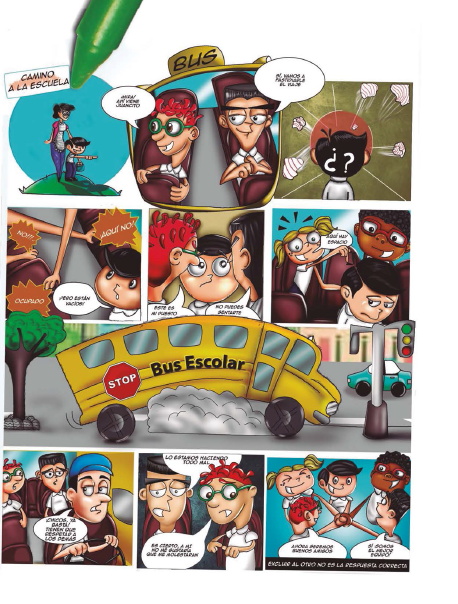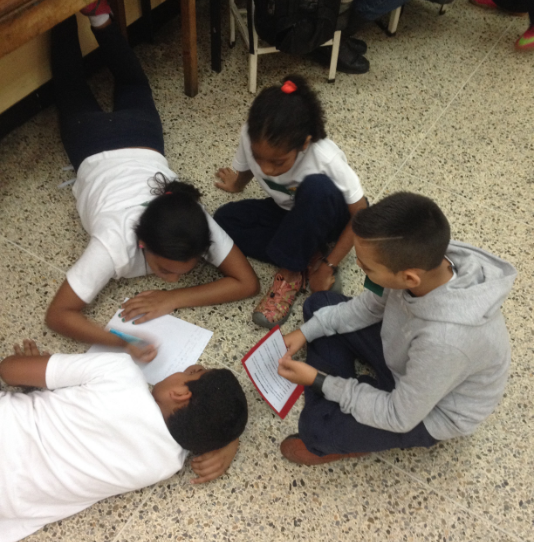“How can I let my friend know that I care about the abuse that is going on, and that I don’t like to see my friend suffer?”
“How can I help and what can I do about it?”
These questions were raised at the Santiago de León de Caracas and Luisa Goiticoa College in Venezuela by students visualizing their experiences of bullying through cartoons and comic strips in order to find ways to end abusive behaviour in schools.
We talked to Vivian Diaz, Human Rights Education Coordinator at Amnesty International Venezuela, to find out more.

“Our approach is to draw out the children’s creativity and use their own ideas to educate everyone – from teachers to fellow students – about how serious the problem of bullying is. The children are 8 to 12 years old, they develop their experiences into stories that illustrators then shape into comic strips and cartoons that captivate and inspire people to talk about the problem,” explains Vivian.

Students at the school work together in groups to share their experiences of bullying, either through theatrical role-plays or by writing down their stories. The stories are then developed into a comic strip magazine sharing the real and imagined experiences of the students and providing a colourful, engaging way for them to open up and find solutions to end abusive behaviour in their school.
Illustrators use the children’s own ideas and language which helps to ensure the messages are understood, reflect the diversity and real experiences of the students’ lives, and simultaneously validate the children’s ideas and realities.

The students also take part in bullying prevention workshops which aim to reinforce what they have learned about bullying and explore how to prevent or respond to acts of bullying they might witness or experience inside schools; in the bathrooms, classrooms and school yards, as well as through cyber bullying.
“I liked it. It’s about no one needing to be alone, there needs to be teamwork,” said a 10 year old girl from the school. “It shows that although people treat you badly, you don’t need to return that or exclude anyone.”
A 12 year old boy involved in the project said, ‘We liked it because they teach us that the group of the popular kids is not the best one, the best one is the one that accepts you.”

According to Vivian, the project’s main concerns are finding out the reason why bullying occurs and how it’s carried out. Vivian sees that the project is a positive influence on children who witness violence in society on a daily basis, and who are very empathetic about their friends’ pain when they are able to share their different experiences of bullying.
The magazine “Timbre contra el acoso escolar” was first published in May 2015 together with orientation cards for parents. Because cartoons can be re-edited, other schools can implement this approach to start creating their own versions based on the experiences of their students.

